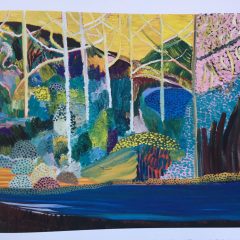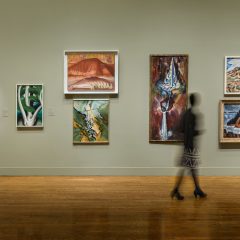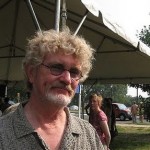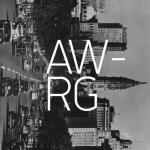We got a special tour of Skyscraper, the Philadelphia Museum of Art theme show devoted to buildings in New York, Philadelphia and Chicago. John Vick, the show’s curator, who was a fellow in the Department of Prints, Drawings, and Photographs, gave us the tour. John has also been writing posts on artblog for the theoretically page and we were eager to see what he had to say about his show.
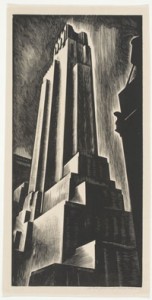
According to Vick, skyscrapers became a tool to express abstraction and modernism and photos of skyscrapers helped photography come into its own as a medium taken seriously. The show, which includes more than 50 images — photos, prints and a couple drawings — was culled from a pool of 500-600 images he looked at initially in the museum’s collection.
Skyscrapers were the new technology of their era, kind of like digital technology today. They were met with a mix of excitement and concern and those feelings are reflected in the images in the exhibit.

While researching his subject, he made a few discoveries of his own. In Berenice Abbott’s picture of the unfinished Chrysler Building he identified both the building and the spot from which she took the photograph — an upstairs floor of the Channing Building. He walked around New York doing on-site detective work for the job.
Back in the early 20th Century, everyone was thinking about skyscrapers, even Marcel Duchamp, included in the show with a note from 1916 which mentions turning the Woolworth building into a readymade. This was three years after the Woolworth Building, then the tallest building in the world, was completed and shortly after Duchamp had come to the US.
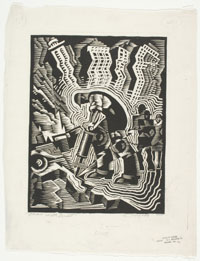
Everyone projected emotion onto these buildings. The pictures in the show span the time from before World War I to the beginning of World War II and reflect the rise and fall of people’s hopes and fears. Skyscrapers thrill and scare, and for some they became the notion of what should be…and for others a representation of everything that was wrong with society. Abraham Walkowitz’s pen and ink drawing was a paranoid evocation of the skyscrapers’ dangers. Dorothy Norman’s dark and tiny photos of the Manhattan skyline seen from a boat and Thurman Rotan’s Horse and Skyscraper picture are counterpoints to the paranoia, being both beautiful pictures and embodiments of hope and optimism.
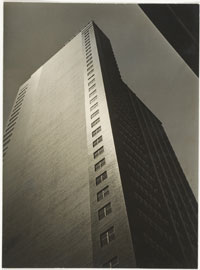
At a time when our eyes have been jaded to the engineering feats of these behemoths, it’s nice to see images of their beginnings and to see how much emotion the skyscrapers evoked.
PS We loved our tour. Thank you, John!


